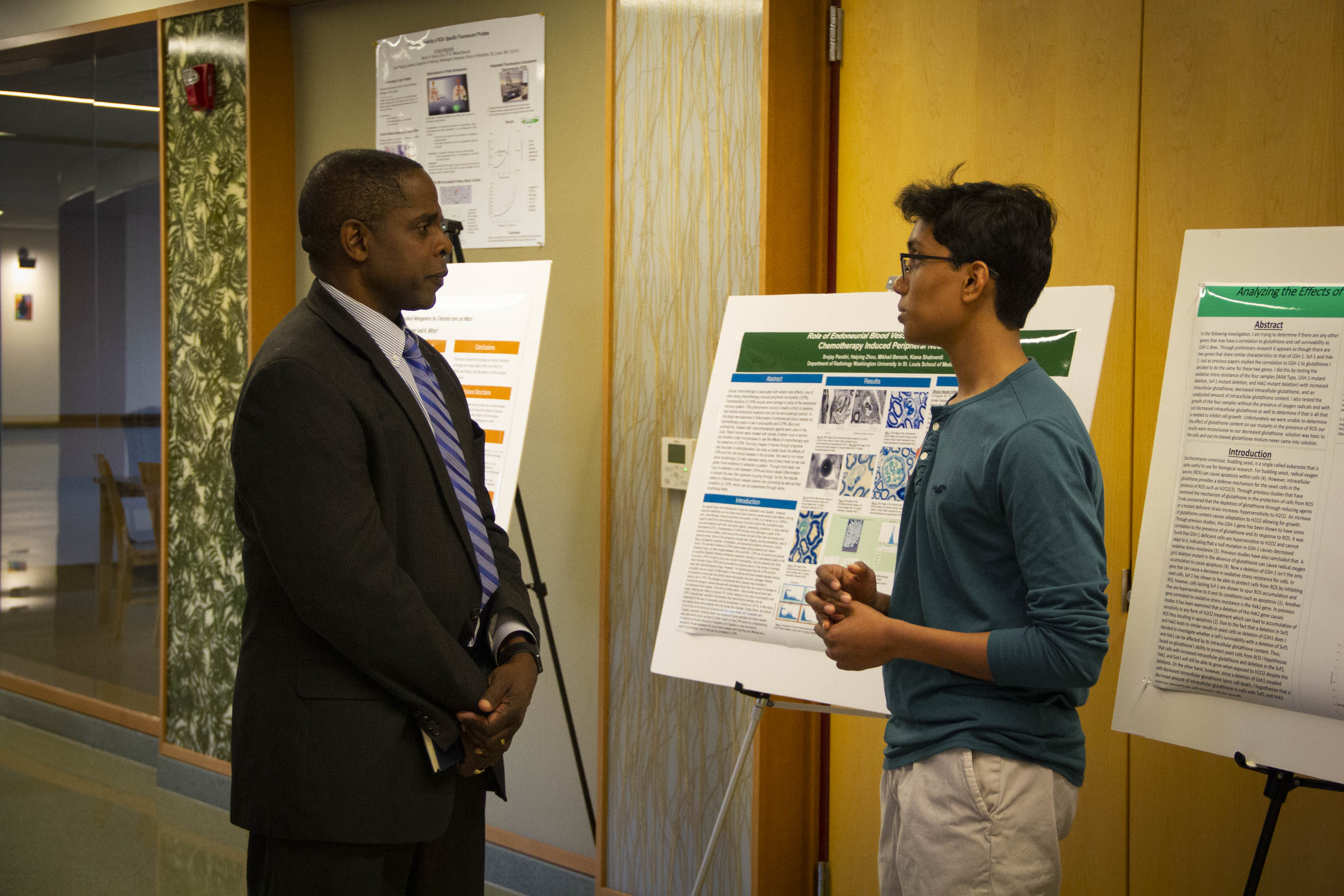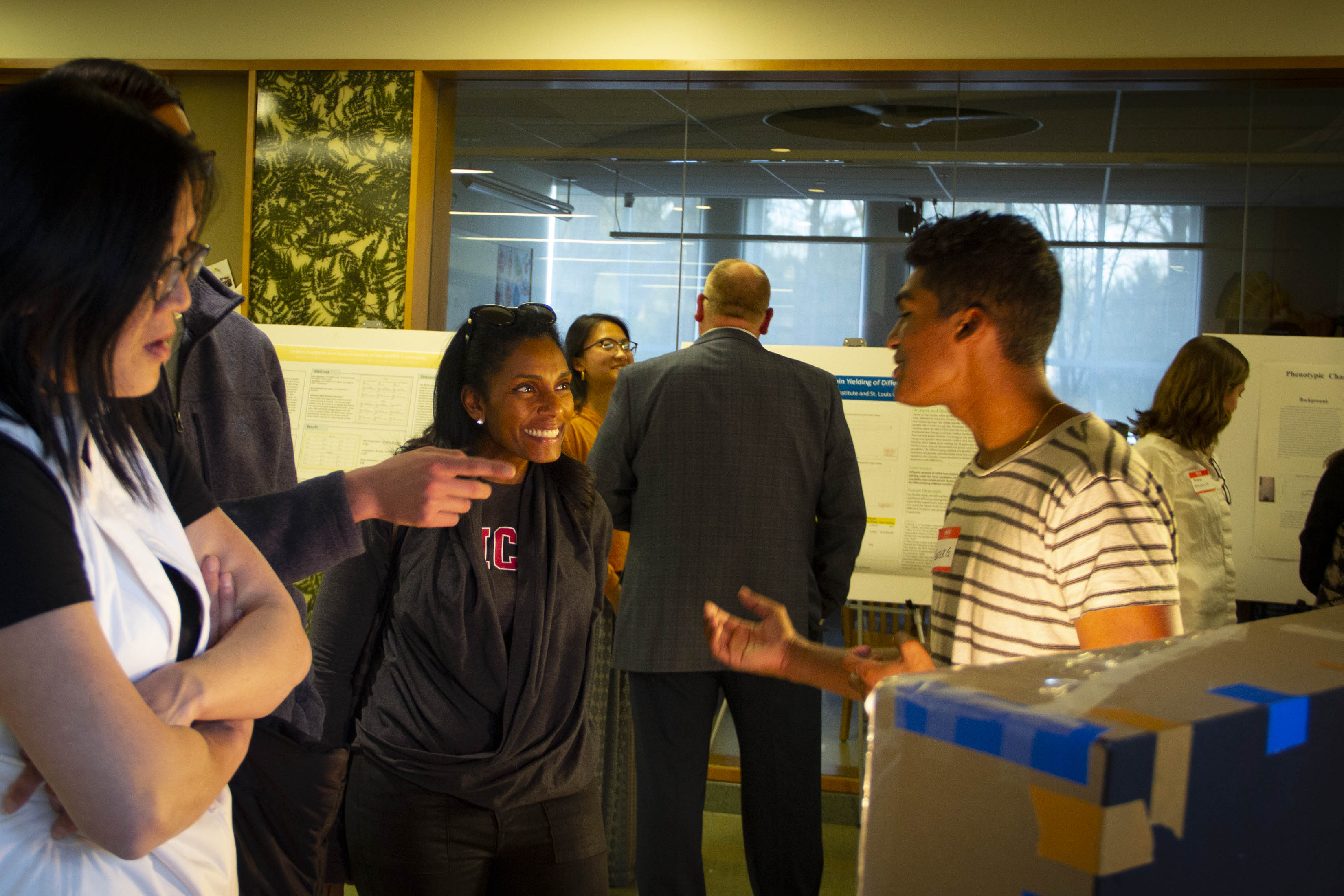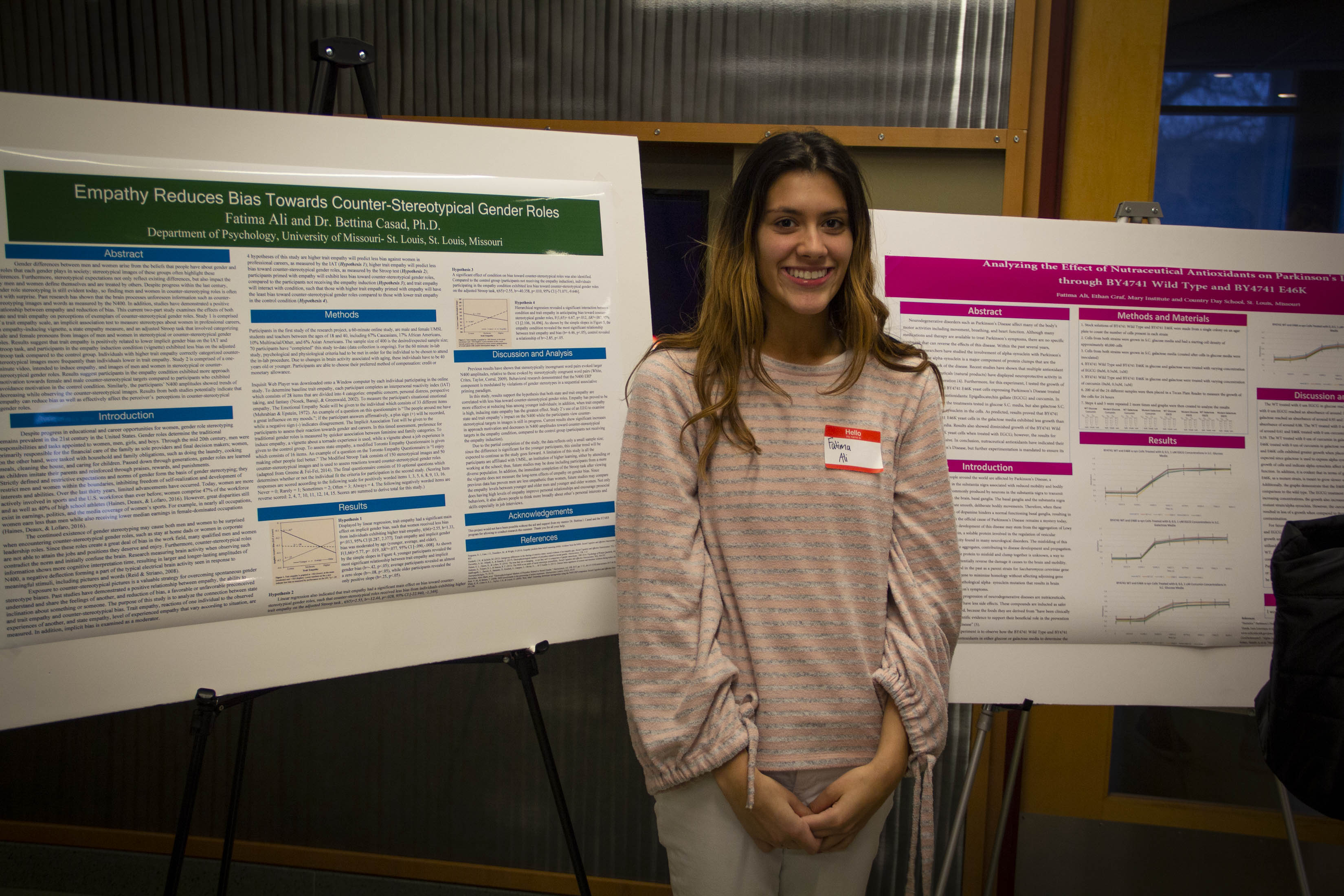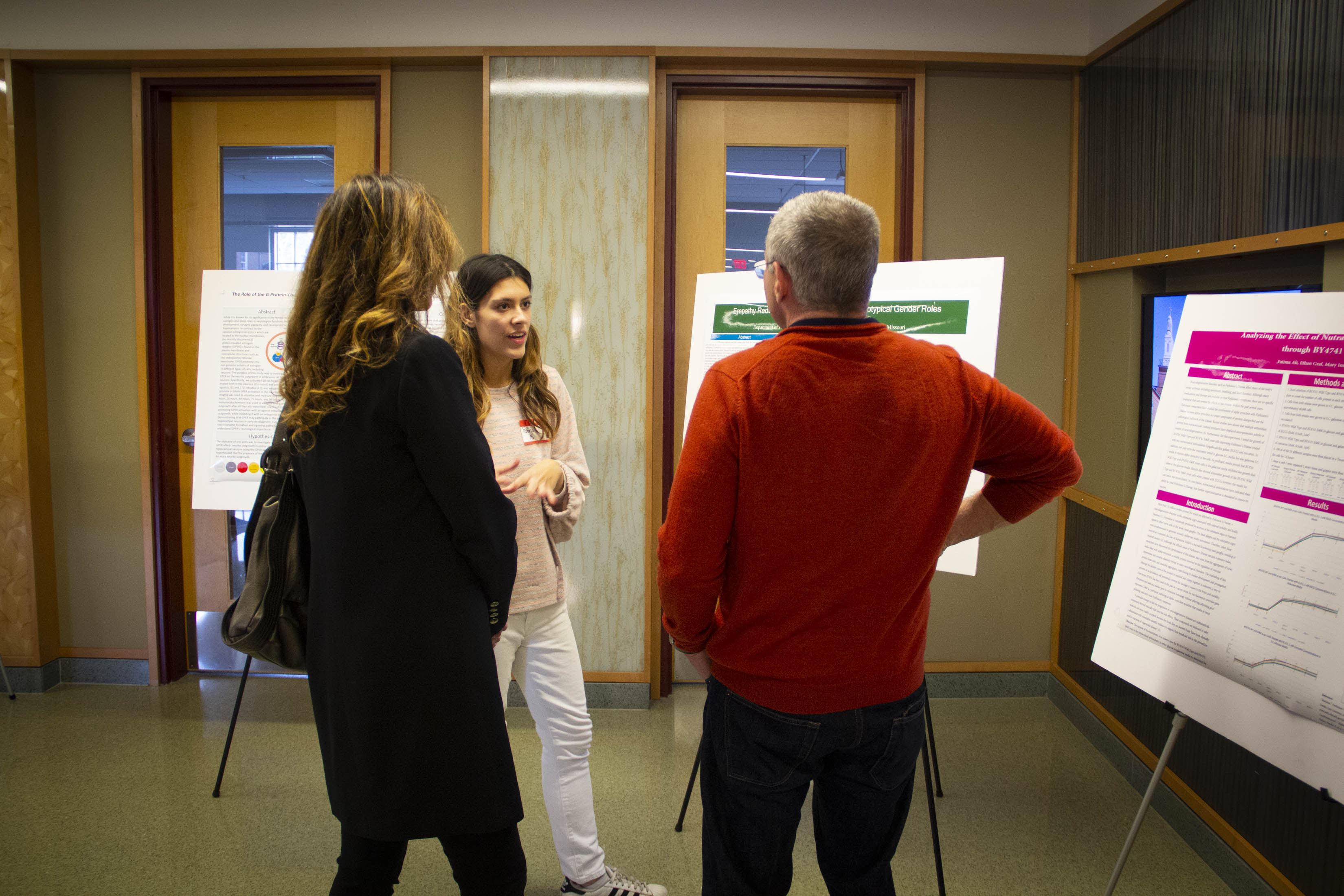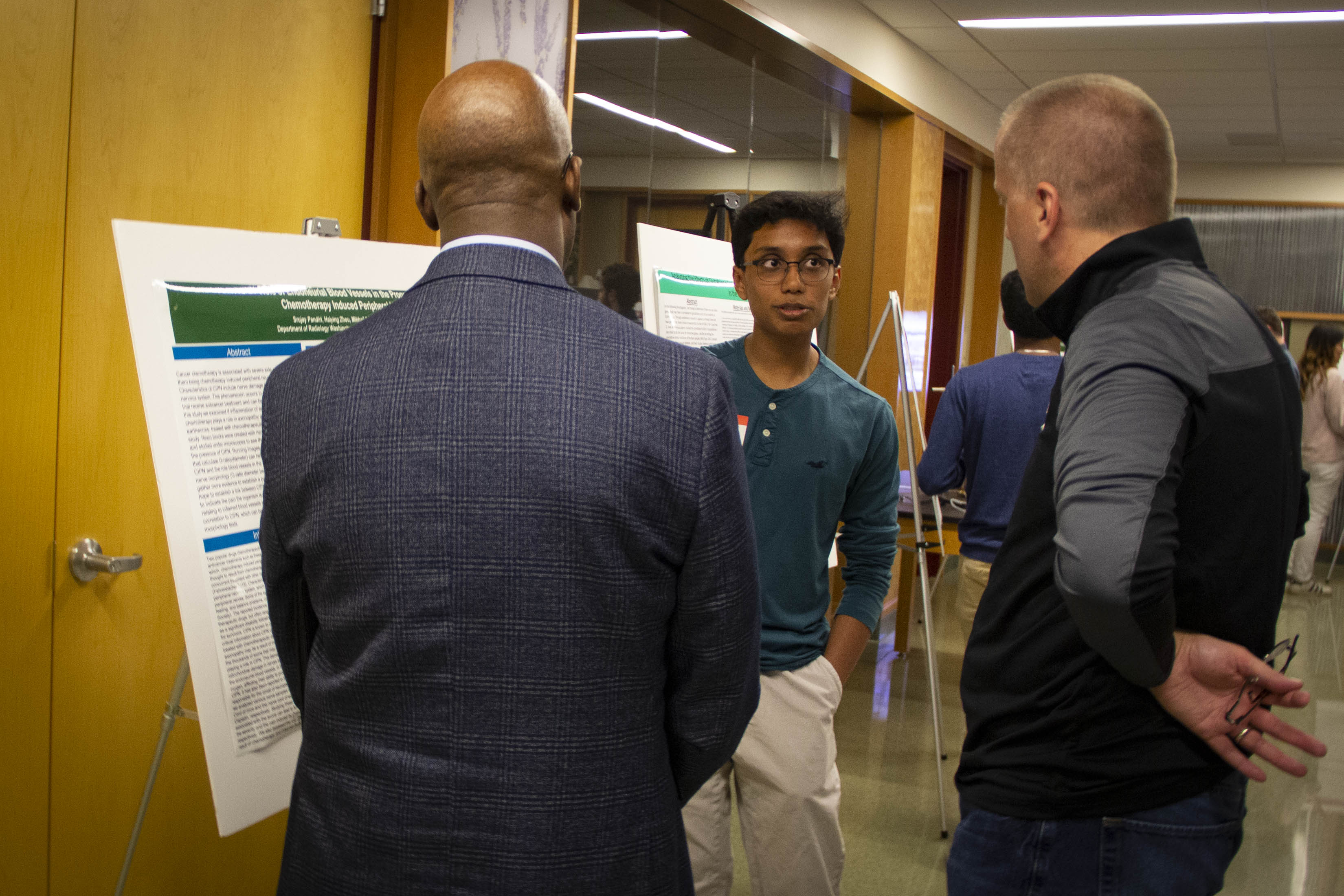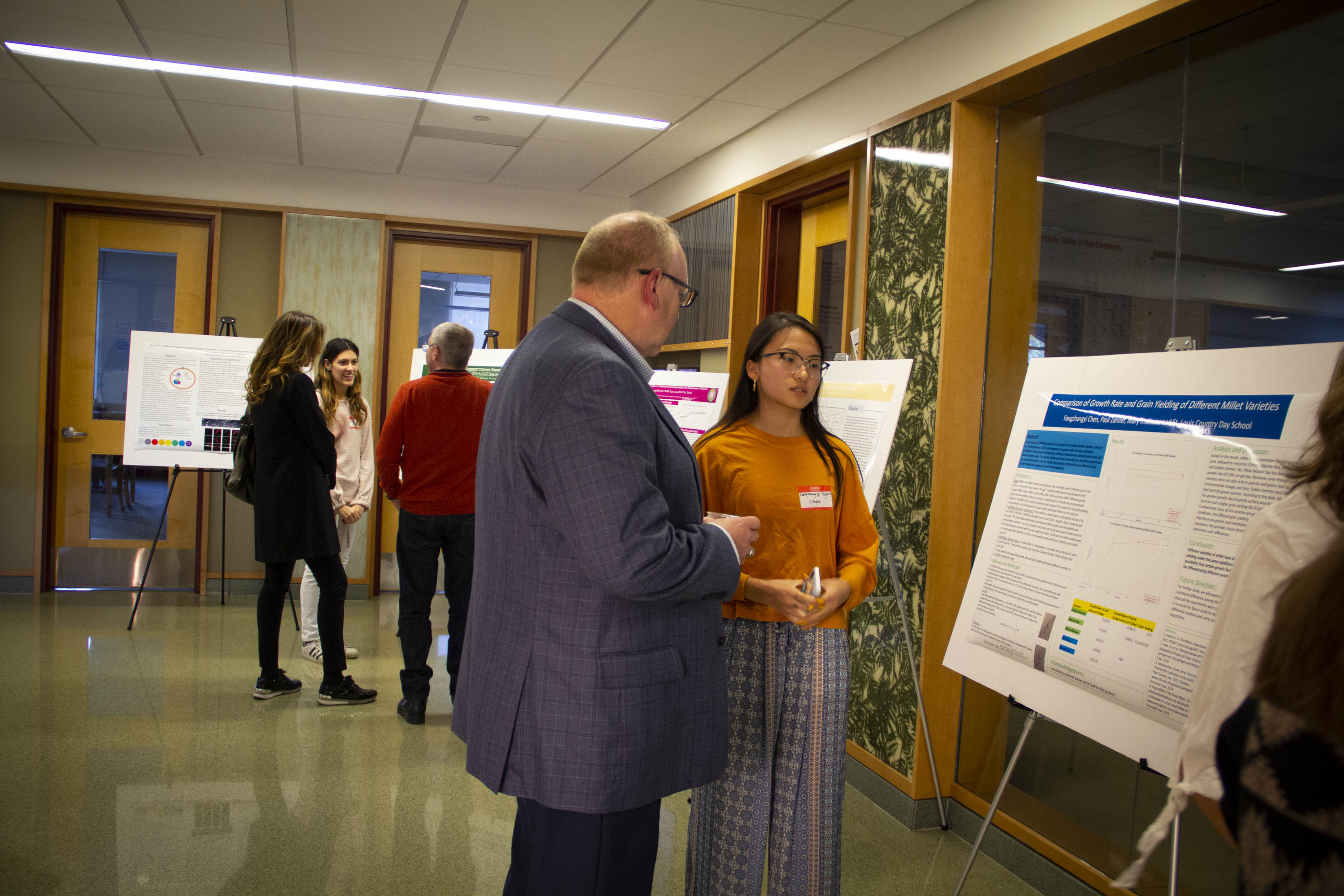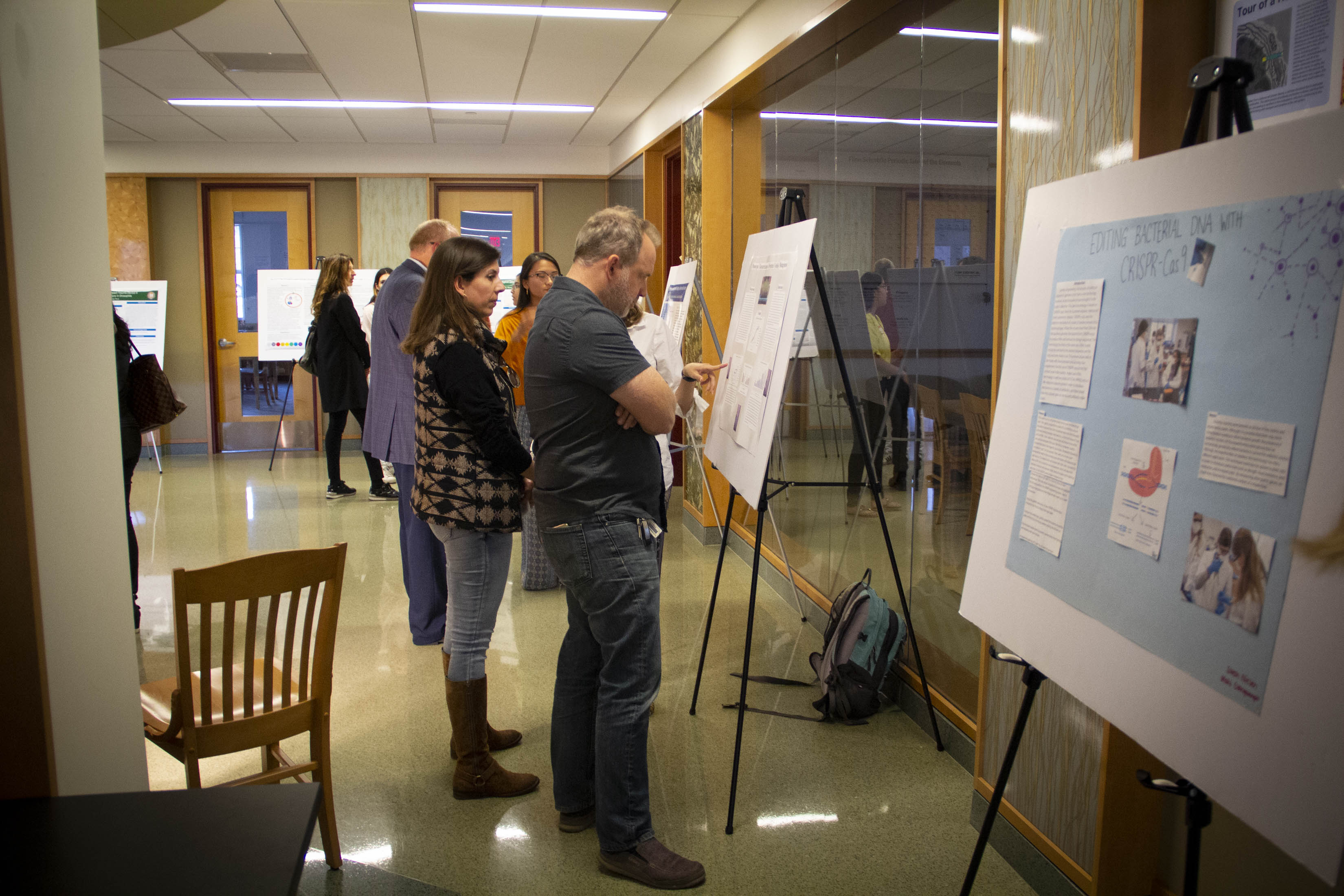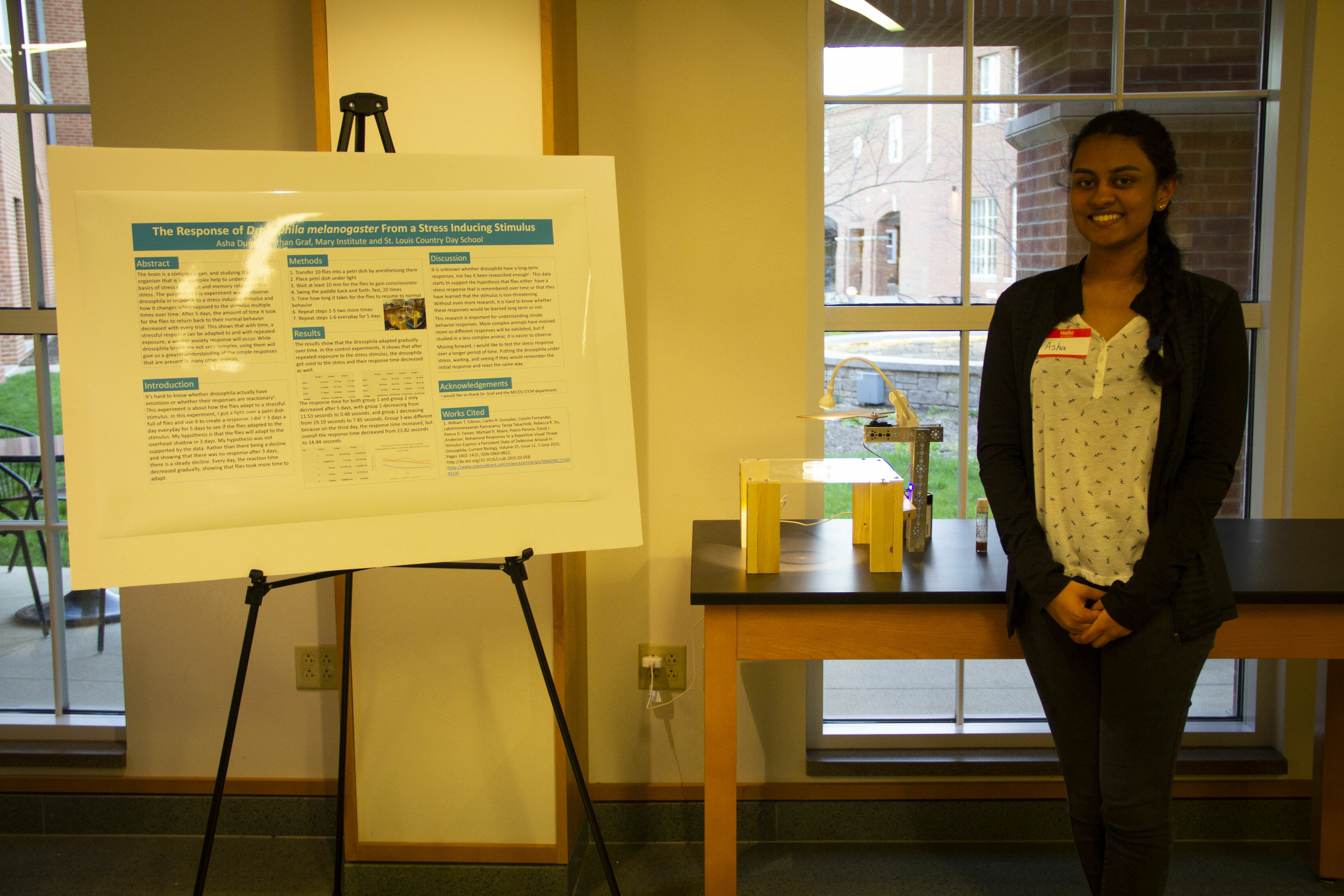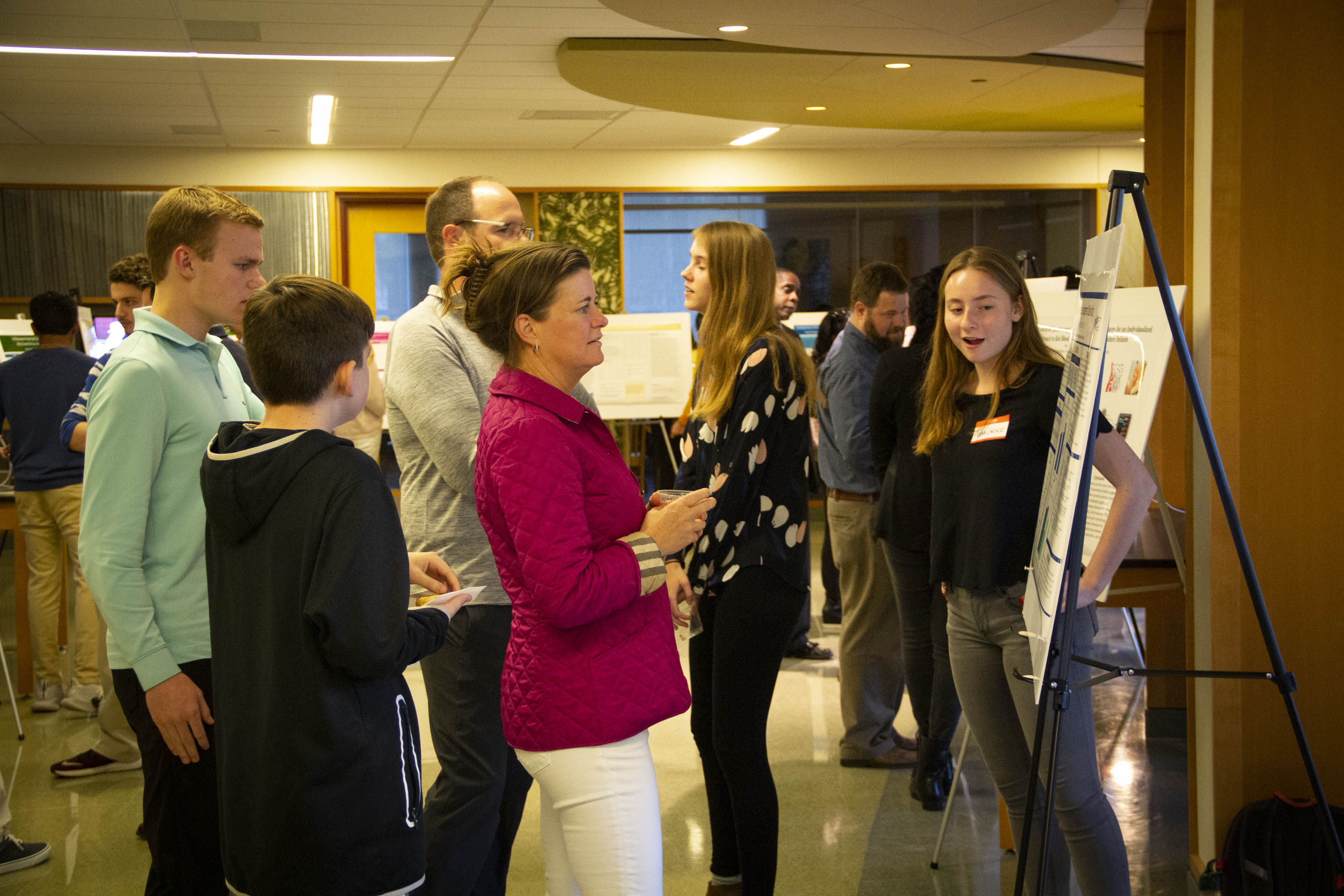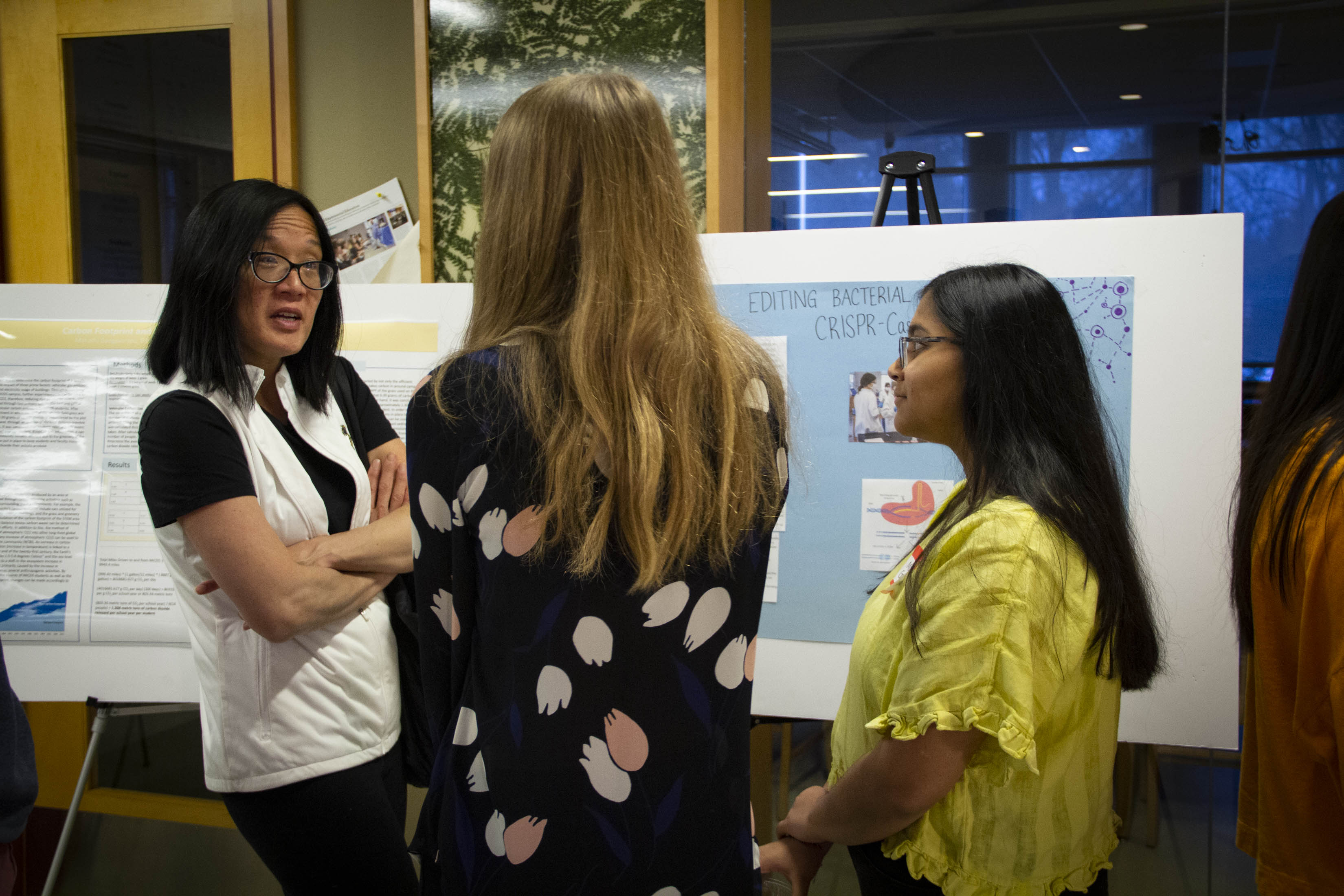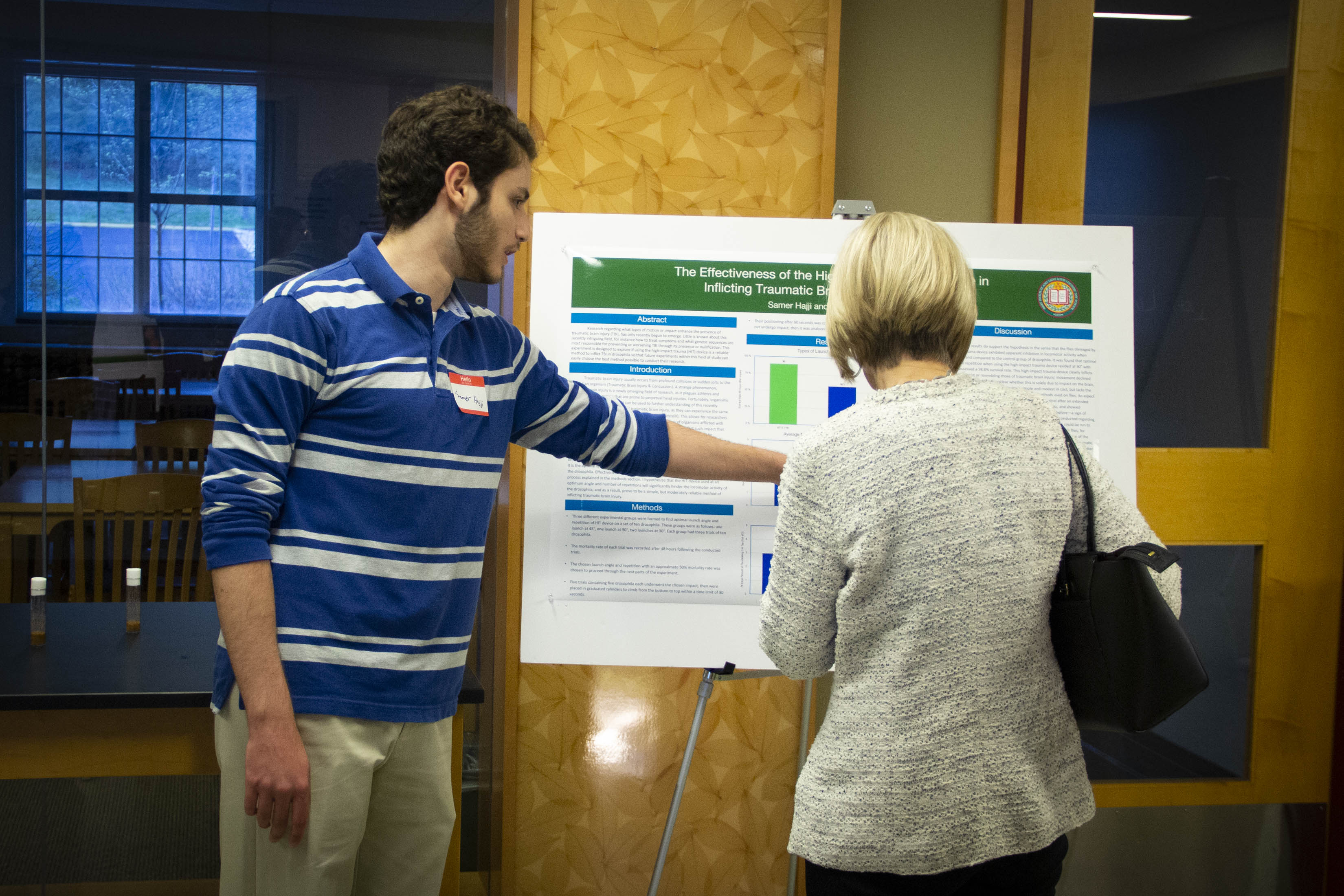At the annual MICDS STEM Research Symposium, Upper School students in the Independent Lab Research course, taught by Ethan Graf, and a Plant Science course, taught by Paul Zahller, along with those students that participated in the STARS program last summer, showcased research projects in a poster presentation format. Research topics ranged from the measurement of fruit fly responses to stress to the evaluation of an aquaponic growth environment for Romaine lettuce. Guests, including faculty, parents and science industry professionals, were welcomed to view research poster boards, listen to students discuss their projects and ask questions.
Fatima Ali ’19 shared, «The research we conducted in class will propel me to take on a career in the future in the sciences and possibly contribute to a world-breaking innovation.»
Leo Vescolani ’19 also enjoyed his experience. «From this project I learned about the importance of weaving scientific design with creative problem-solving in order to tackle greater issues such as sustainability in dense urban environments. I enjoyed developing these creative solutions and having the freedom to dedicate significant time on a complex project. I am interested in pursuing environmental studies in college and potentially going into environmental law or engineering after my undergraduate degree.»
Asha Dundoo ’20 reflected, «I didn’t have any research experience before this class, and when a teacher told me about this class, I got excited. It’s a consequence-free zone because if something goes wrong with the experiment, it is okay because it is just a class. I ended up really liking the research process, and thus, I applied for and will be participating in the STARS program this summer. I hope to pursue STEM research in college and in the future.»
Mr. Bob Shaw, JK-12 Science Department Chair, remarked, «Many of the student scientists took advantage of their computer science skills and the resources available in the new Biggs Maker Space. For example, students programmed raspberry pi microcomputers to collect data and to make adjustments to their experiment based on the data collected. Others used the Biggs Maker Space to engineer devices used in their research; for example, one student used the 3-D printer to produce pollen grains for biomimicry purposes. It is amazing to see our student researchers collaborate with science professionals on and off campus.»
| Student | Program | Poster Titles |
| Fatima Ali | STARS | Empathy reduces bias towards counter-stereotypical gender roles |
| Fatima Ali | Independent Research Class | Analyzing the effect of nutraceutical antioxidants on Parkinson’s Disease |
| Kylie Chen | Independent Research Class | Comparison of growth rate and grain yielding of different millet varieties |
| Jeffrey Desloge | STARS | The oxidation of dissolved manganese by chlorate ions on Mars |
| Asha Dundoo | Independent Research Class | The response of Drosophila melanogaster from a stress-inducing stimulus |
| Mahi Gangavarapu | Independent Research Class | Carbon footprint and sequestration of the MICDS community |
| Haniya Habib | STARS | The role of the G-protein coupled estrogen receptor on the neural outgrowth of rat hippocampal neurons |
| Samer Hajji | Independent Research Class | The effectiveness of a high-impact trauma device in inflicting traumatic brain injury in Drosophila |
| Srujay Pandiri | STARS | Role of endoneurial blood vessels in the progression of chemotherapy induced peripheral neuropathy |
| Srujay Pandiri | Independent Research Class | Analyzing the effects of glutathione content on cellular growth of Svf-1 and Hxk-2 mutants in the presence of ROS |
| Rida Qazi | STARS | Anticipatory interference in younger and older adults |
| Rohit Siddabattula | Independent Research Class | Inducing traumatic brain injury in Drosophila melanogaster to replicate chronic traumatic encephalopathy |
| Grihith Varaday | Independent Research Class | Meta-analysis of risk factors associated with persistent postsurgical pain after breast and cardiothoracic surgery |
| Anna Grace Yuska | STARS | Using near-infrared spectroscopy and pulse oximetry measures for an individualized approach to red blood cell transfusion in premature infants |
